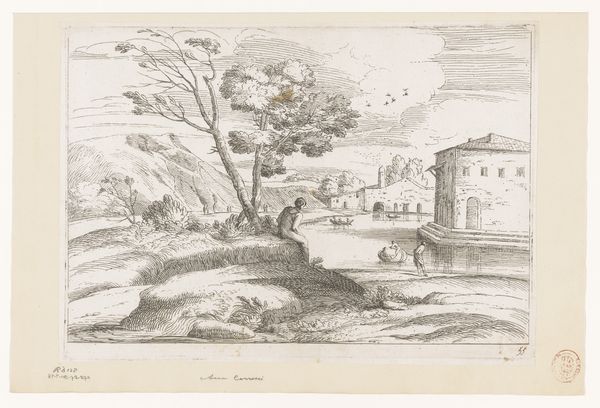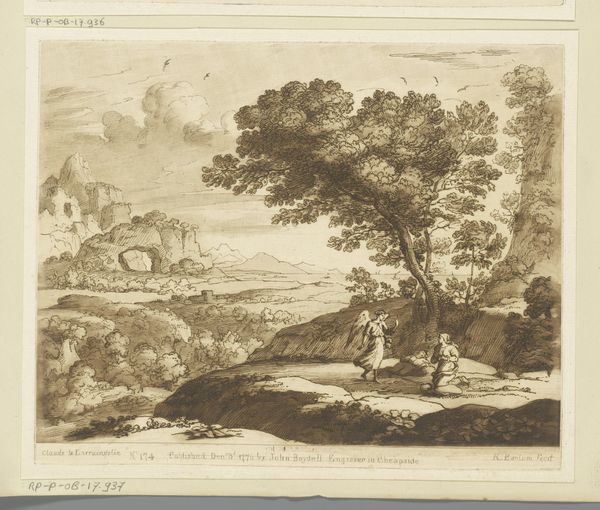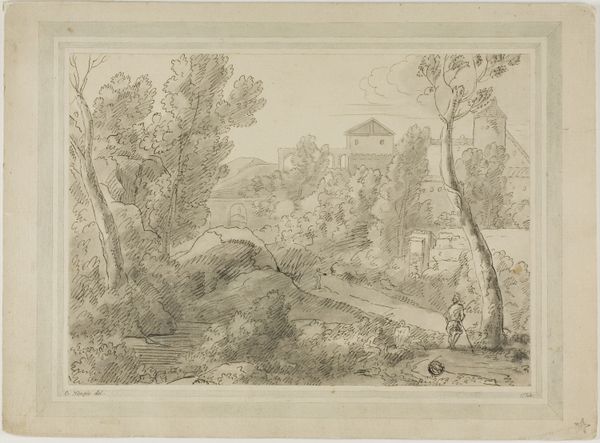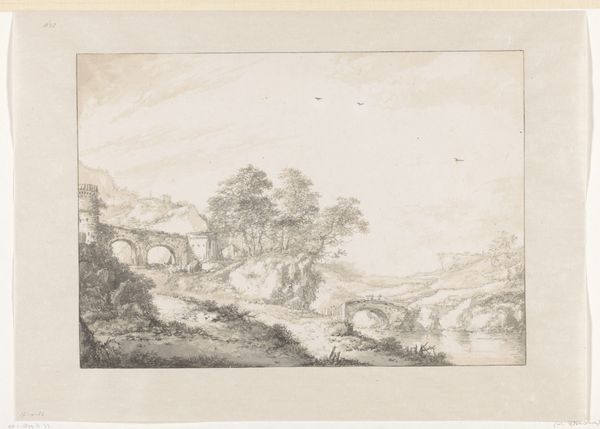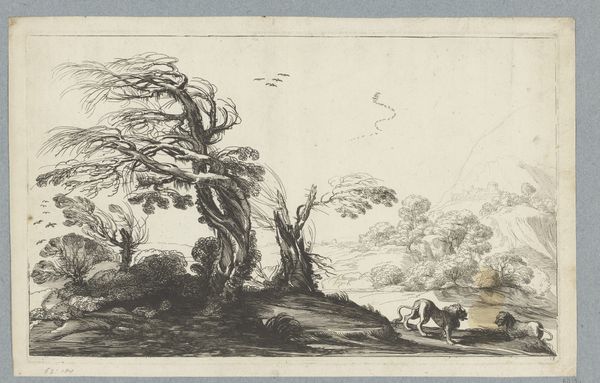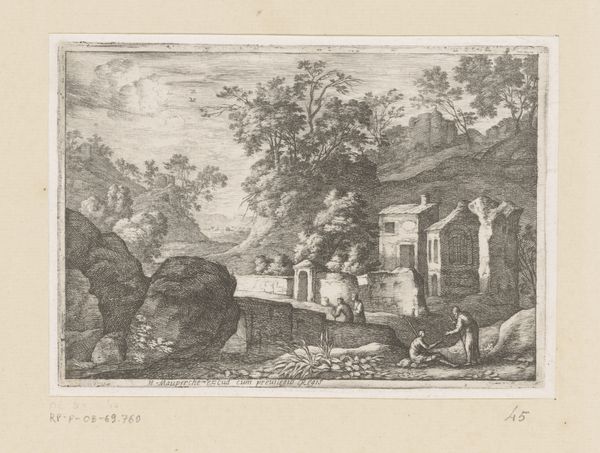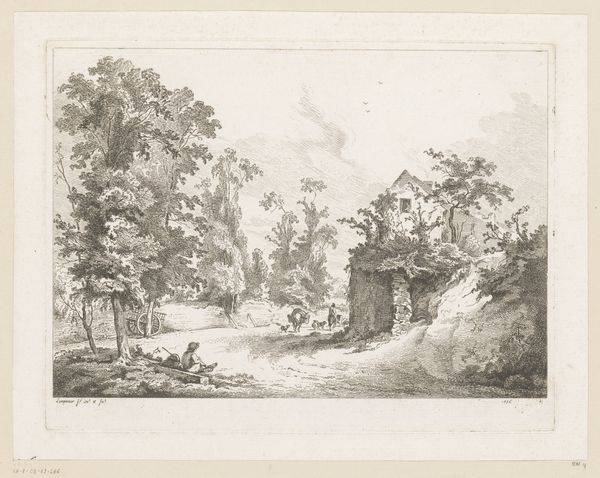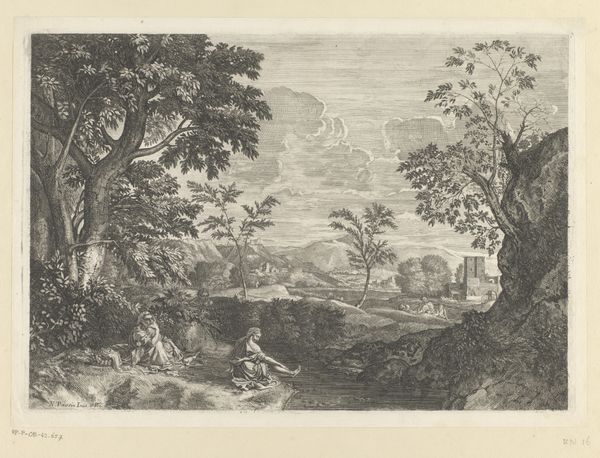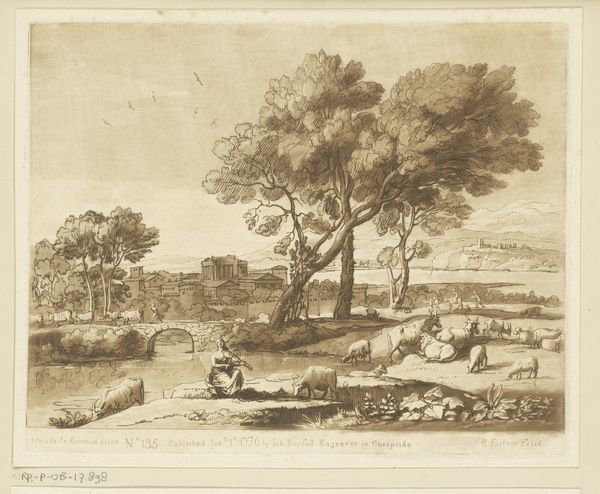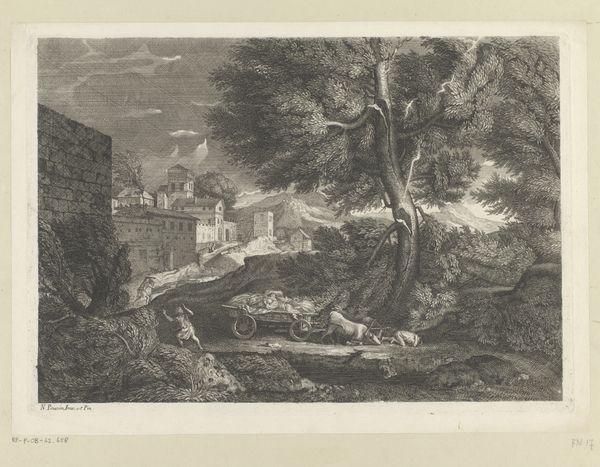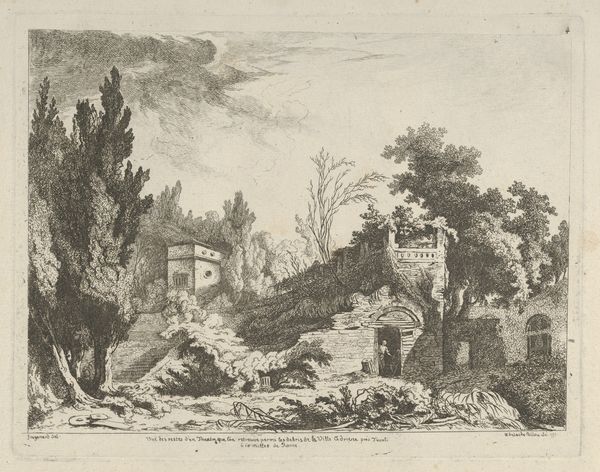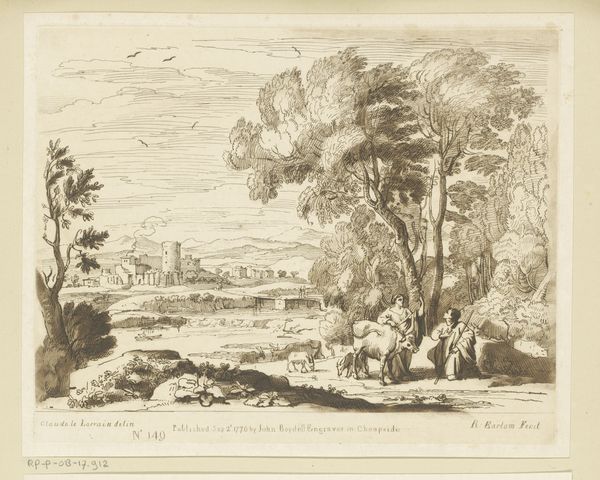
etching, engraving
#
baroque
#
etching
#
landscape
#
waterfall
#
figuration
#
line
#
engraving
Dimensions: height 261 mm, width 424 mm
Copyright: Rijks Museum: Open Domain
Curator: This is Jean Pesne’s "Landschap met waterval en ruïnes," or "Landscape with waterfall and ruins," an etching and engraving dating between 1666 and 1695. Editor: It’s striking how Pesne has rendered this scene. There's something quite somber about the light and the architectural fragments, almost like a stage set for reflection on the transience of power. Curator: Baroque landscape often incorporated ruins to evoke a sense of history, reflecting on the rise and fall of civilizations. Pesne's placement of the ruins emphasizes a dialogue between nature and the impact of human ambition, fitting the tradition perfectly. The artwork lives in the collection of the Rijksmuseum. Editor: I see a real contrast. There’s the dramatic, almost theatrical rendering of nature—the gnarled tree, the plunging waterfall—versus these precise, geometric ruins. To me, it speaks volumes about the supposed power of empires in contrast with the enduring forces of nature, and our own small part in this complex equation. I am drawn to that small human figure on the bottom right, they are not larger than any branch of leaves in the scenery, or a single rock of the ruin. Curator: Precisely! The composition invites contemplation on mortality and the grand sweep of time, themes often explored through the genre of landscape art, particularly during the Baroque period when artists often received commissions to legitimize royalty and the role of power through moralistic visual parables. Editor: But beyond that formal reading, the choice to depict ruins also opens up discussions around power dynamics, what we choose to memorialize, and whose stories are centered. Which structures do we revere, and what is lost and forgotten in the relentless flow of history? What about marginalized figures, that little seated human form aside? Are they even memorialized? I cannot tell for sure the figure is seated comfortably and contently. Curator: That's a powerful interpretation. Pesne offers us not just a picturesque scene but also a meditation on history and its complexities. The detailed etching and engraving allow for close examination, encouraging a deeper engagement with these themes. Editor: Absolutely. It's more than just a pretty landscape. It's a prompt for us to interrogate our relationship with the past and question the narratives we inherit. And maybe to reflect on what might remain of our world in a few centuries, and what of it will have fallen and become ruins as well. Curator: Thank you for such illuminating remarks.
Comments
No comments
Be the first to comment and join the conversation on the ultimate creative platform.
